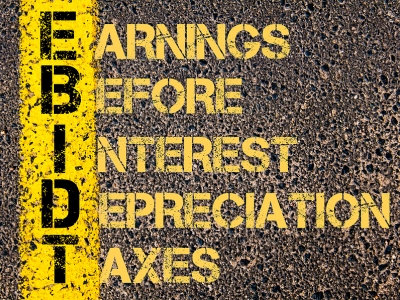
Comments & Feedback From Pro Intermediaries & Pro Advisors On BizBen:

The profit and loss statement ("P&L") will show total revenue from sales and other sources and will then deduct the cost of goods sold ("COGS") or cost of sales ("COS")--raw materials, production labor, manufacturing or service delivery expenses--directly related to the product or service to find the Gross Profit. From the Gross Profit is deducted all general and administrative ("G&A") expenses--such as rent, travel, insurance, officer's and manager's salaries, utilities, advertising, etc.--all for the general administration of the company unrelated to a specific product or service. After deducting these G&A expenses, we arrive at Net Profit or Net Income--the Earnings Before deduction of Interest and Taxes (EBIT) or the Earnings Before deduction of Interest, Taxes, Depreciation, and Amortization (EBITDA). When we deduct the EBIT or EBITDA, we arrive at the Adjusted Net Income. You can think of EBIT as the calculation of cash flow and EBITDA as cash flow less deductions not requiring a cash outlay depreciation and amortization.
Cash flow can be defined as the difference between the cash available at the beginning of an accounting period (month, quarter, year) and the cash available at the end. Cash flows in from sales, loans, investments, and asset sales, and flows out to pay operating expenses, loans, and asset purchases. So, cash flow is similar to but different from the net profit or loss shown on a P&L.
For purposes of buying or selling a business, cash flow and seller's discretionary earnings ("SDE") are the most important metrics. Cash flow shows just how liquid the business is and how well it can be sustained with existing revenues and existing expenses. SDE, though provides the rest of the story. When buying a business, we generally are looking for what the seller truly realizes out of the business. This can be a complicated calculation that business brokers have developed certain expertise in making. Generally, you would take the net profit (or loss) and add to it interest paid, depreciation taken, and discretionary expenses run through the company personal cell phone, personal automobile use, insurance for the benefit of the owner, business travel with a particularly personal benefit, etc., etc. In the case of a business generally under a million dollars or under 10-12 employees, usually the SDE includes the wages paid to one owner/manager, and all the taxes and fees the business paid on those wages.
For almost all business categories there are "rules of thumb" of multiples of SDE to place a range of value on a business. This is just one factor, but a very important on in determining market value. For example, dine-in restaurants typically sell within a range of 1.8 to 2.3 times SDE. This, of course can vary considerably based on many other factors; but, it does illustrate why a clear understanding of not just cash flow but also actual SDE is essential for a successful business sale or purchase.
 ADJUSTED NET INCOME, To determine an value of a business as it compares to others certain expenses are pulled from the P && L that may otherwise distort the comparable value of one business over the other. The EBIDTA describes some of this. These costs may change from business to another. Other add backs may apply. A for instance would be a situation where two like businesses are operated differently by choice. Example, one business is absentee operated and the other is self operated. Is the savings of patrol by self operating the business more profitable? You must add back the patrol not spent in order to compare the two fairly. However, other related advantages may add value.
ADJUSTED NET INCOME, To determine an value of a business as it compares to others certain expenses are pulled from the P && L that may otherwise distort the comparable value of one business over the other. The EBIDTA describes some of this. These costs may change from business to another. Other add backs may apply. A for instance would be a situation where two like businesses are operated differently by choice. Example, one business is absentee operated and the other is self operated. Is the savings of patrol by self operating the business more profitable? You must add back the patrol not spent in order to compare the two fairly. However, other related advantages may add value. 



